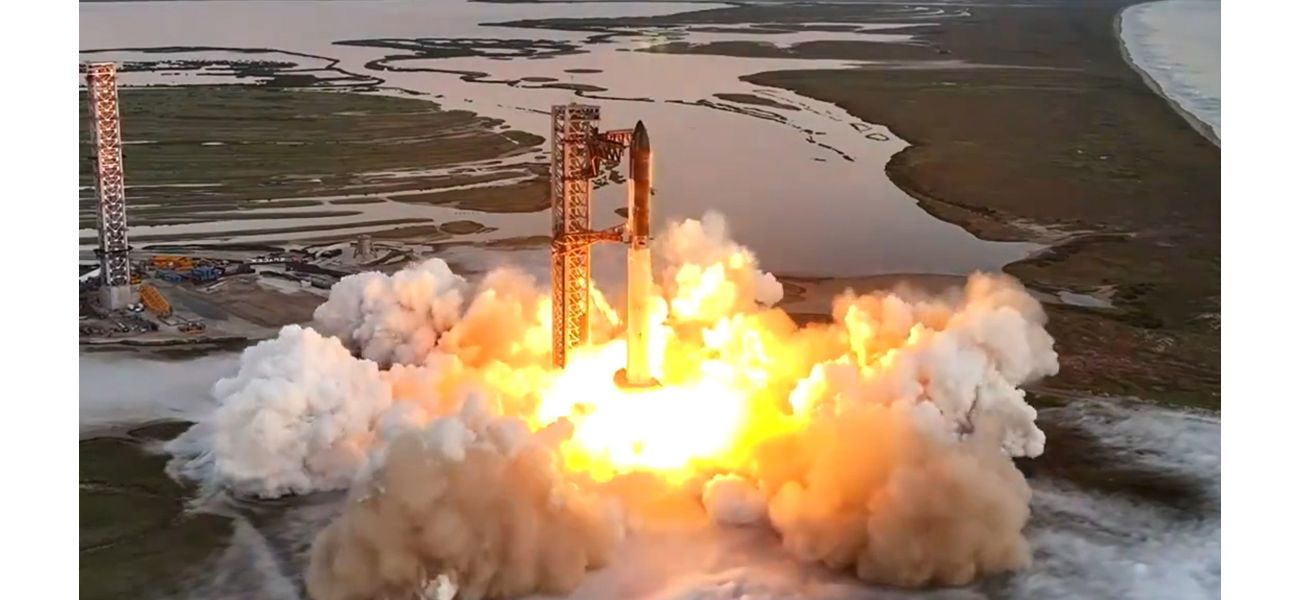Starship booster successfully lands in SpaceX's latest mission.
The strongest rocket ever created.
October 13th 2024.

SpaceX is beyond thrilled as they celebrate a major milestone in space exploration. For the first time ever, they have successfully caught the boosters of the most powerful rocket ever built. This is a remarkable achievement, especially considering that their previous four attempts resulted in the boosters being destroyed, either shortly after takeoff or upon entering the sea. But this time, things were different. The 232-foot booster, affectionately called "Super Heavy," was gracefully caught by massive metal arms on the launch tower, known as chopsticks.
Many doubted that this feat was even possible, but the engineers at SpaceX proved them wrong. This is a monumental success for the company, and founder Elon Musk envisions that one day, this technology will allow humans to travel to Mars. The excitement was palpable at the launch site, as SpaceX's Dan Huot exclaimed, "Are you kidding me? I am shaking right now!" It was a sight to behold as the rocket took off, with the biggest spaceship ever built, Starship, at its helm.
At 400 feet tall, the empty Starship blasted off at sunrise from the southern tip of Texas, near the border with Mexico. It was a momentous occasion that will surely go down in engineering history. Kate Tice, from SpaceX headquarters in California, added, "This is a day for the books." Although the rocket itself is set to splash down in the Indian Ocean, like its predecessors, the fact that it was caught in mid-air is a testament to SpaceX's remarkable progress.
Today's successful test launch is a huge step forward for the company, after facing some challenges in the past. One notable incident was when the rocket exploded. However, SpaceX has continuously improved and upgraded its technology, including upgrading the software and reworking the heat shield to improve thermal tiles. This has enabled them to attempt catching the booster today, only when both the booster and launch tower were in a stable condition.
The ultimate goal for SpaceX is to develop the technology to reuse boosters, making space travel more cost-effective and sustainable. This is something they have been doing for nine years with their smaller Falcon 9 rockets, which have successfully delivered satellites and crews into orbit. However, the boosters land on floating ocean platforms or concrete slabs miles away from their launch pads. Starship, on the other hand, is a much larger spacecraft, with 33 methane-fuel engines on the booster alone.
Recycling Falcon boosters has not only increased the launch rate but also saved SpaceX millions. Moreover, NASA has already placed an order for two Starships, which will be used to land astronauts on the moon in the coming years. This is just the beginning, as SpaceX's ultimate goal is to use this rocket to send people and supplies not only to the moon but also to Mars.
For the latest updates on SpaceX's groundbreaking achievements, be sure to follow The Agency on Twitter and Facebook. You can also sign up for daily push alerts to receive The Agency's articles directly to your device. With SpaceX's continuous advancements, the future of space travel is looking brighter than ever.
Many doubted that this feat was even possible, but the engineers at SpaceX proved them wrong. This is a monumental success for the company, and founder Elon Musk envisions that one day, this technology will allow humans to travel to Mars. The excitement was palpable at the launch site, as SpaceX's Dan Huot exclaimed, "Are you kidding me? I am shaking right now!" It was a sight to behold as the rocket took off, with the biggest spaceship ever built, Starship, at its helm.
At 400 feet tall, the empty Starship blasted off at sunrise from the southern tip of Texas, near the border with Mexico. It was a momentous occasion that will surely go down in engineering history. Kate Tice, from SpaceX headquarters in California, added, "This is a day for the books." Although the rocket itself is set to splash down in the Indian Ocean, like its predecessors, the fact that it was caught in mid-air is a testament to SpaceX's remarkable progress.
Today's successful test launch is a huge step forward for the company, after facing some challenges in the past. One notable incident was when the rocket exploded. However, SpaceX has continuously improved and upgraded its technology, including upgrading the software and reworking the heat shield to improve thermal tiles. This has enabled them to attempt catching the booster today, only when both the booster and launch tower were in a stable condition.
The ultimate goal for SpaceX is to develop the technology to reuse boosters, making space travel more cost-effective and sustainable. This is something they have been doing for nine years with their smaller Falcon 9 rockets, which have successfully delivered satellites and crews into orbit. However, the boosters land on floating ocean platforms or concrete slabs miles away from their launch pads. Starship, on the other hand, is a much larger spacecraft, with 33 methane-fuel engines on the booster alone.
Recycling Falcon boosters has not only increased the launch rate but also saved SpaceX millions. Moreover, NASA has already placed an order for two Starships, which will be used to land astronauts on the moon in the coming years. This is just the beginning, as SpaceX's ultimate goal is to use this rocket to send people and supplies not only to the moon but also to Mars.
For the latest updates on SpaceX's groundbreaking achievements, be sure to follow The Agency on Twitter and Facebook. You can also sign up for daily push alerts to receive The Agency's articles directly to your device. With SpaceX's continuous advancements, the future of space travel is looking brighter than ever.
[This article has been trending online recently and has been generated with AI. Your feed is customized.]
[Generative AI is experimental.]
0
0
Submit Comment





